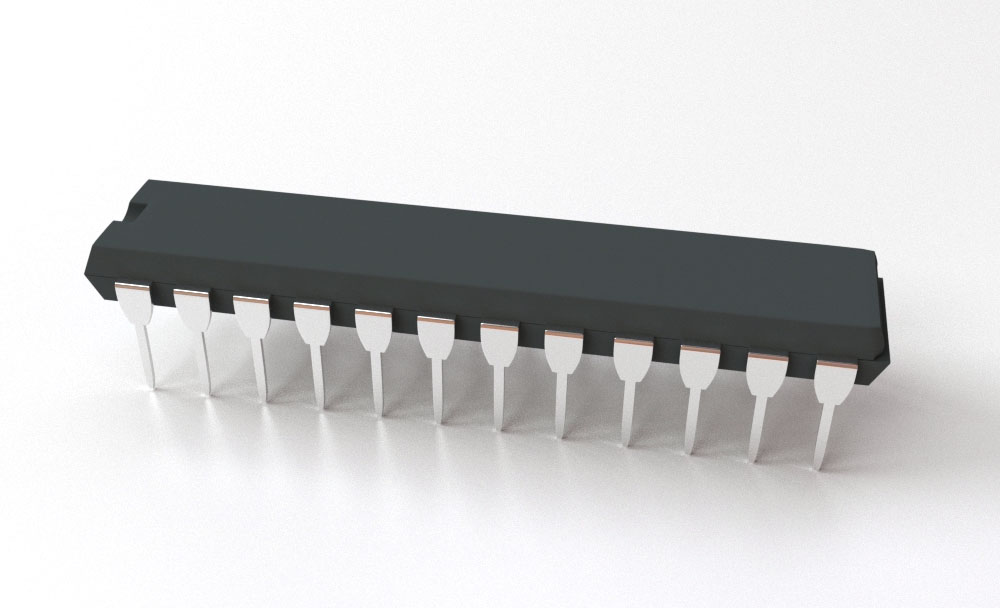
The ATMEGA128 is a microcontroller with high processing power, programmability and energy-efficiency suitable for any kind of applications. The device is also available in a extended version with more peripheral functions. On the market, there are several controllers that can be used for programming them. In this post, we will show you which one is the best to use when programming an ATMEGA128 chip.
Arduino Nano
The Arduino Nano is a small and versatile board that can be used in a wide variety of projects to help you build something useful. It has a small form factor that makes it easy to use in a range of projects. The Nano has a number of features that make it an ideal choice for small projects. At only 5.5 x 3.5 x 1.5cm, it’s small enough to fit on a desk or table, and its friendly size makes it easy to use with other equipment. The Nano features simplified connectivity, with just eight digital input/output pins and one analog input pin. It also has a built-in USB interface, so you can get data in and out of it. For connectivity, Nano comes with a built-in, custom-made FTDI board. This allows the Nano to connect to a PC via the USB port, and a Mac via the FTDI cable, making it easy to transfer data from the device.
Arduino Leonardo:ATMEGA128A-AU
The Arduino Leonardo is a microcontroller board based on the ATmega32U4, a power-efficient component with high performance and digital signal interface. It is the Arduino board with the most powerful microcontroller available. The main focus of the board is on performance and power efficiency. Besides the microcontroller, the board features a number of peripherals that can be used to develop complex and intelligent systems. These peripherals are controlled via the on-board 26-pin signal interface. Depending on the application, they can be either external to the microcontroller or integrated directly on the board. The Arduino Leonardo can be used for a variety of applications, ranging from robotics, wearable technology and Internet of Things (IoT) to home automation and smart buildings.
Arduino Micro:ATMEGA128A-AU
The Arduino Micro is a small, cheap, and easy-to-use board for those who want to learn about electronics. It is based on the ATmega32U4 and 66AK2G12ABYA100E processor, which has 32K of flash memory and 2K of RAM. The Micro features a number of digital and analog input/output pins and a built-in USB interface that can be used to transfer data between a computer and the board. The Arduino Micro is a great platform to start learning about electronics. It can drive up to 6Vdc with a maximum of 500mA, and it is also small enough to fit into a shirt pocket. The Arduino Micro comes with a USB cable and aGetting Started Guide that guides you through the basic concepts of electronics. The software library is compatible with the Arduino environment, which makes it easy to use in your projects.
ATMEGA328P-AU
The ATMEGA328P-AU is an 8-bit microcontroller with a 32-bit AVR architecture, 64KB of RAM and 2KB of EEPROM. It is a member of the AVR microcontroller family, which is considered to be the most popular microcontroller in the world. The microcontroller has a built-in crystal oscillator and an internal Operating Voltage (VIO) Reference to ensure ultra-low power consumption. The microcontroller also has an Internal Temperature Sensor and a Power-On Reset circuit to protect the microcontroller against unintentional reset. The ATmega328P-AU is particularly useful for applications that require a medium-to-high level of performance and features. It is also suitable for controlling various external devices via its 18-bit Programmable Peripheral Interface (PPI).
ATMEGA168-AU
The ATMEGA168 is a fully integrated 8-bit microcontroller designed for applications in consumer electronics, medical devices and industrial automation. The microcontroller has a built-in 16-bit Operating Voltage Reference and Internal Temperature Sensor that offer ultra-low power consumption. The microcontroller also has an on-chip oscillator and External Clock Source (ECS) so that it can be easily integrated with other MCUs. The ATMEGA168-AU is especially suitable for applications that require high performance, power efficiency, and features, such as smart home appliances, automobiles, and robots. The microcontroller comes with a software library that allows users to easily access its advanced features, including a timer, PWM, I2C, I2S, serial communication, and a real-time clock for applications.
ATMEGA328-AU
The ATMega328-AU is an 8-bit microcontroller designed for applications requiring a medium level of performance, features and low power consumption. It has 32 KB of flash memory, 2KB of SRAM and an on-chip oscillator that can be easily integrated with other MCUs. The micro-controller also has an on-chip Temperature Sensor and a Power-On Reset circuit that protect against unintentional reset. Depending on the application, the microcontroller can be configured with a range of peripherals, including six Serial Peripheral Interface (SPI) and two I2C interfaces. The microcontroller is especially useful in applications that require moderate performance, power efficiency, and features. It is also ideal for controlling various external devices via its 18-bit Programmable Peripheral Interface (PPI). The ATMega328-AU has a software library that allows users to easily access its advanced features, including a timer, PWM, I2C, I2S, serial communication, and a real-time clock for applications.
Summary:ATMEGA128A-AU
The ATmega328P-AU is suitable for projects that require a high level of performance, features, and low power consumption. The ATMega168-AU is suitable for projects that require a high level of performance, features, and low power consumption. It also has an on-chip oscillator and an on-chip temperature sensor to protect against unintentional reset. The ATMega328-AU is suitable for projects that require a high level of performance, features, and low power consumption. The ATmega328 is also a good choice when you want to develop in Arduino programming language.





 2022-11-24
2022-11-24 


